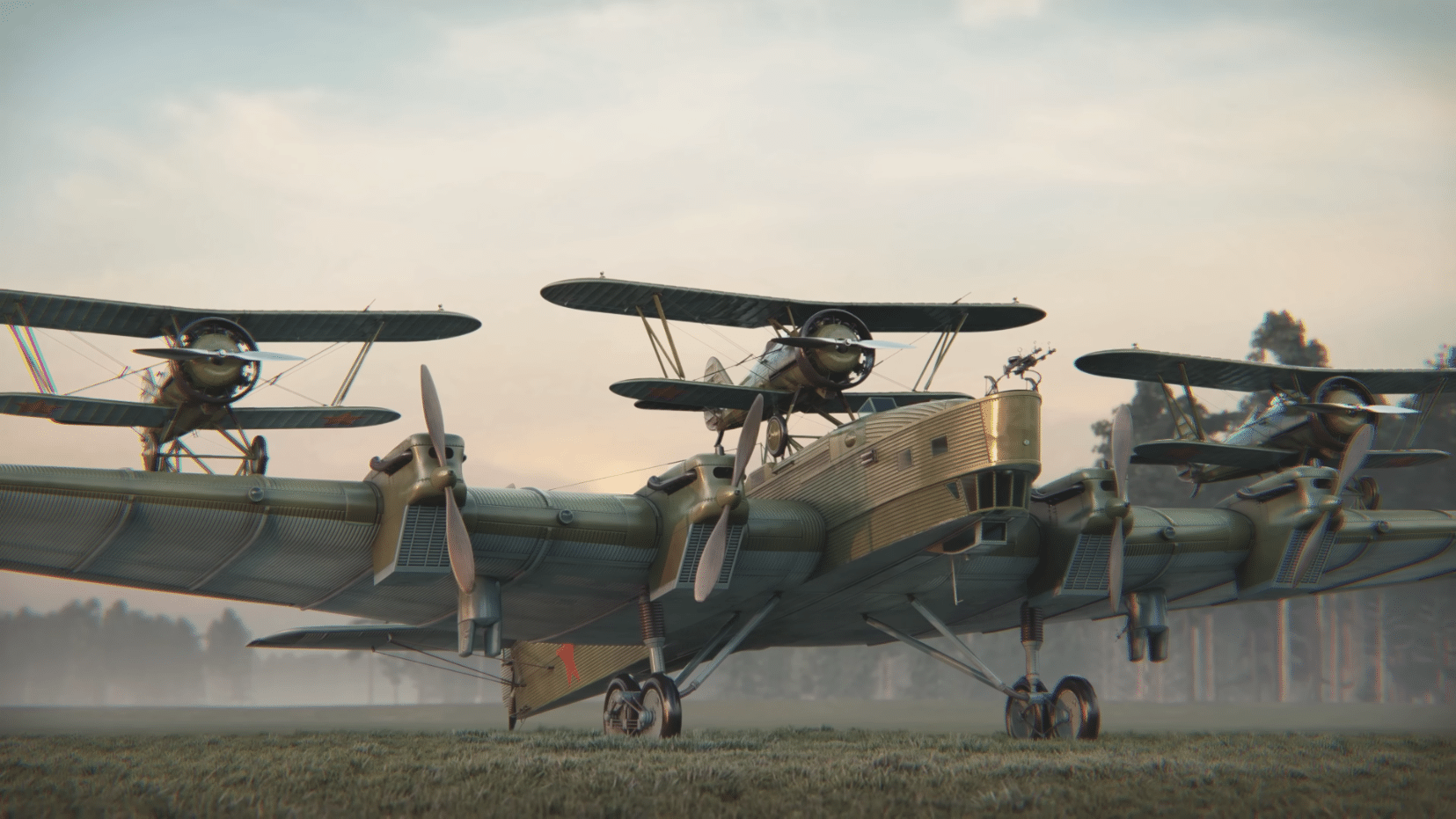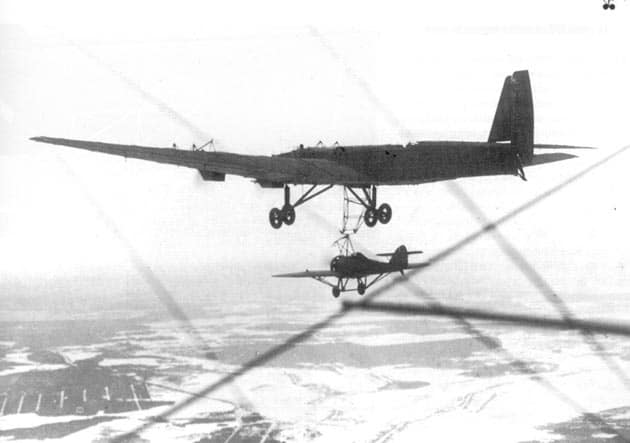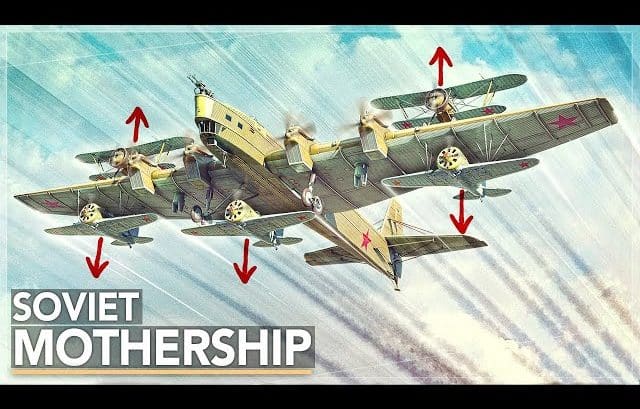In August 1941, three lumbering Soviet bombers headed toward German-occupied territory. But these were no ordinary bombers – they were flying aircraft carriers designed to enter enemy lines to deploy a swarm of fighter planes and dive bombers.
Nothing like it had ever been seen before. These massive juggernauts are about to make history as they head straight for the enemy.

A Problem
By the 1930s, it was clear that planes would play a role in future conflicts. But there was a problem – big heavy bombers could carry lots of fuel to fly greater distances. However, fighter planes that need to be agile could only carry enough fuel to cover a short distance.
This means that in hostile territory, the bombers were often on their own.

A Radical Solution
In 1930, Vladimir S. Vakhmistrov came up with a radical solution: If you could have bombers carry the fighters, then they could be transported over great distances and deployed whenever needed.
At first, this idea fell on deaf ears to the Red Army. But the strategic benefits couldn’t be ignored. The platform for Vakhmistrov’s aircraft carriers was the mighty TB-1 and TB-3. As the biggest bombers of their time, they had plenty of power to carry the fighters. Vakhmistrov would eventually call his creation the Zveno.

A Brilliant Setup
Instead of weighing the bomber down, the fighters somehow helped boost their performance. During flight, the fighters would continuously run their engines while drawing fuel from additional tanks fitted to the bomber.
This brilliant setup allowed the bombers to fly quicker, climb higher, and even lift more than they could without the fighters attached. Launching was pretty straightforward, as long as the bomber was kept steady, any skilled pilot would manage. Reattaching to the carrier, however, was another matter. In later versions, a trapeze-like system allowed pilots to dock with the carrier to take on more fuel.

Making History
As Germany conquered most of Europe, leaders feared the Soviet Union was next. Thus, resources were shifted to the production of proven weapons and only five Zveno carriers were ever delivered.
But as the Soviet’s darkest hour was approaching, Zveno carriers were about to make history. On June 22, 1941, Germany made a massive attack on the Soviet Union. They were short on capable dive bomber crews, and their existing fighters didn’t have the range to reach the bridge. Thus, the Red Army raced to use the Zveno carriers from storage, bringing them back to working order.
Before striking the bridge, Zveno pilots cut their teeth attacking an oil refinery. Patrolling fighters didn’t even try intercepting the I-16s since Soviet fighters couldn’t have made it far beyond enemy lines. The Zvenos made a devastating attack on the refinery. The first use of Zvenos in combat was a massive success.

Impressive Flying Aircraft Carriers
In the early hours of August 10, three Zveno carriers left to attack the King Carol Bridge. Taking on heavy anti-aircraft fire, they managed to strike the bridge, returning home without any losses. Zveno carriers were proving to be more useful than originally thought, capable of making sudden and unexpected attacks against difficult-to-reach targets.
However, once dive bombers and well-trained crews became available, the Zveno carriers fell out of favor. But the concept always seemed, a little too ahead of its time.



